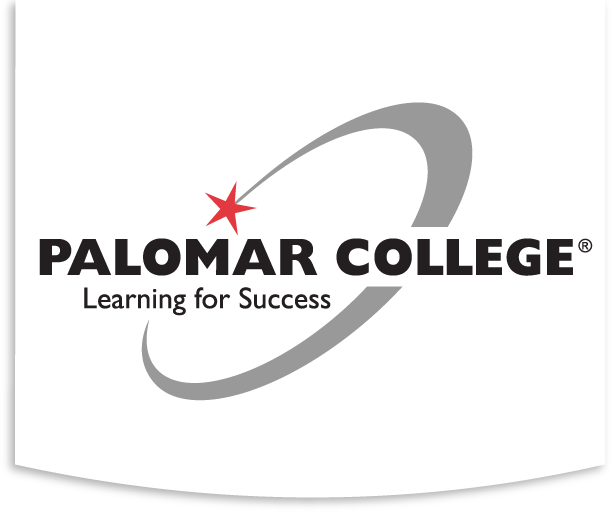What changed from IGETC to Cal-GETC?
| IGTEC | Cal-GETC | Associate Degree General Education |
|---|---|---|
| A minimum of 37 semester units | A minimum of 34 semester units | A minimum of 21 semester units |
| Area 1A – English Composition; 1 course | Area 1A – English Composition; 1 course | Area 1A – English Composition; 1 course |
| Area 1B – Critical Thinking and Composition; 1 course | Area 1B – Critical Thinking and Composition; 1 course | Area 1B – Oral Communication and Critical Thinking; 1 course |
| Area 1C – Oral Communication ; 1 course (CSU only) | Area 1C – Oral Communication; 1 course | |
| Area 2 – Mathematics and Quantitative Reasoning; 1 course | Area 2- Mathematics and Quantitative Reasoning; 1 course | Area 2 – Mathematics and Quantitative Reasoning; 1 course |
| Area 3 – Arts and Humanities; 3 courses | Area 3 – Arts and Humanities; 2 courses | Area 3 – Arts and Humanities; 1 course |
| Area 4 – Social & Behavioral Sciences; 2 courses | Area 4 – Social & Behavioral Sciences; 2 courses | Area 4 – Social & Behavioral Sciences; 1 course |
| Area 5 – Physical and Biological Sciences; 2 courses and one lab | Area 5 – Physical and Biological Sciences; 2 courses and one lab | Area 5 – Natural Sciences; 1 course |
| Area 6 – Language other than English (LOTE) | ||
| Area 7 – Ethnic Studies; 1 course | Area 6 – Ethnic Studies; 1 course | Area 6 – Ethnic Studies; 1 course |
What is Cal-GETC?
The California General Education Transfer Curriculum (Cal-GETC) is the singular general education pathway for California Community College (CCC) students to fulfill lower-division general education requirements necessary for transfer and admission to both the California State University (CSU) and the University of California (UC).
How does Cal-GETC work?
Completion of the California General Education Transfer Curriculum (Cal-GETC) will permit a student to transfer from a California Community College (CCC) to a California State University (CSU) campus or program without the need, after transfer, to take additional lower-division, general education courses to satisfy campus general education requirements. Completion of Cal-GETC will permit a student to transfer from a California Community College (CCC) to a University of California (UC) campus or program generally without the need, after transfer, to take additional lower-division, general education courses to satisfy campus general education requirements. For most students, it is strongly recommended that students complete Cal-GETC prior to transfer. Advantages of completing Cal-GETC may include more flexibility in class selection at the university and timely progress to degree completion. All CSUs and most UC campuses and programs will accept certified Cal-GETC completion as satisfying lower-division general education requirements. Note that some individual colleges or majors within a UC campus may not accept or recommend Cal-GETC to fulfill all of their general education requirements.
Is Cal-GETC required for transfer?
Completion of the Cal-GETC is not an admission requirement or admission guarantee for transfer to the CSU or UC, nor is it the only way to fulfill the lower-division, general education requirements for students at the CSU or UC. However, Cal-GETC may be a requirement for some programs (e.g., if an Associate Degree for Transfer (ADT) is required) and under AB 928 is the “singular lower division general education pathway that meets the academic requirements necessary for transfer admission to the California State University and the University of California.”
For the UC,
Students may choose to complete coursework to meet the campus general education requirements of the university program to which they plan to transfer, but such a course of action would be inconsistent with the intent of AB 928. Completion of the Cal-GETC lower-division General Education Transfer pathway may not be appropriate for some engineering, math, or science students or for students completing majors that have a high number of lower-division unit requirements. Such students may be advised to focus on completing their lower-division major preparation requirements while meeting minimum admission requirements (e.g., the UC seven-course pattern for UC admissions). Such a student would not be Cal-GETC certified prior to transfer.
For the CSU,
For the CSU, some students may elect to take courses to fulfill the CSU’s general education requirements (CSU GE) after transfer, but such a course of action would be inconsistent with the intent of AB 928. Completion of the Cal-GETC lower-division General Education Transfer pathway may not be appropriate for some engineering, math, or science students or for students completing majors that have a high number of lower-division unit requirements (especially those without a Transfer Model Curriculum for the associate degree for transfer).
Do all areas on Cal-GETC need to be completed for certification?
California State University
Students transferring to the California State University system using Cal-GETC must complete all areas of the Cal-GETC pattern.
University of California
Students transferring to the University of California system may complete a maximum of two courses of the Cal-GETC pattern after transfer. Neither of the courses to be completed after transfer may be in English Communication (Area 1) or Mathematical Concepts, or Quantitative Reasoning (Area 2).
Associate Degree for Transfer
Partial completion of the Cal-GETC pattern is not permitted for the Associate Degree for Transfer
What is the minimum grade required for Cal-GETC?
A minimum “C” grade is required in each college course for Cal-GETC. A “C” is defined as a minimum of 2.0 grade points on a 4.0 scale. A “C-” grade valued at less than 2.0 grade points on a 4.0 scale cannot be used for Cal-GETC certification.
What is the unit requirement for each Cal-GETC course?
Each Cal-GETC course must be a minimum of 3.0 semester or 4 quarter units.
How do IGETC courses apply toward Cal-GETC?
Students who completed IGETC-approved courses prior to Fall 2025, including courses that are no longer active in assist.org, may apply those courses in the same Cal-GETC area(s) for certification.
How do Cal-GETC courses apply toward IGETC?
Students seeking IGETC certification may use Cal-GETC-approved courses in the same area(s)—whether newly created or newly approved as of Fall 2025.
How does Credit for Prior Learning (CPL) apply toward Cal-GETC?
CPL in the form of credit by exam, Advanced Placement (AP), and International Baccalaureate (IB) are approved forms of CPL for Cal-GETC. All other forms of CPL such as portfolio, industry certification, and military credit are not approved forms of credit for Cal-GETC.
How do courses from private and out of state universities count toward Cal-GETC?
Appropriate non-CCC general education courses in the humanities, mathematics, social sciences, and natural sciences that are completed at United States institutions with accreditation Cal-GETC approved accreditors should be routinely included in Cal-GETC.
Care should be taken when evaluating non-CCC courses to fulfill any of:
- Cal-GETC Area 1B (Critical Thinking and Composition) – few non-CCC colleges offer a second semester course that combines Critical Thinking and Composition
- Cal-GETC Area 1C (Oral Communication)
- Cal-GETC Area 6 (Ethnic Studies) – where there are narrow constraints on course eligibility and required competencies that are unlikely to be met by any one course not specifically targeted to the requirements.
A California Community College may include non-CCC lower-division courses that are completed at a United States Institution with accreditation approved by Cal-GETC:
- Accrediting Commission for Community and Junior Colleges (ACCJC) Western Association of Schools and Colleges
- Higher Learning Commission (HLC)
- Middle States Commission of Higher Education (MSCHE)
- New England Commission of Higher Education (NECHE)
- Southern Association of Colleges and Schools Commission on Colleges (SACSOC)
- WASC Senior College and University Commission (WQSCUC)
What are the catalog rights and continuous enrollment requirements for Cal-GETC?
Students transferring using either the IGETC or CSU GE Breadth pattern may continue to receive both full or partial certification based on their catalog rights (See Table 1 for CSU Catalog Rights & Continuous Enrollment).
For any student who begins at a California community college prior to Fall 2025:
Students may present an IGETC certification beginning with the version that was current when they began at a California community college.
- For example: If the student begins in the 2022-2023 academic year, they may follow IGETC.
- If the student begins in the 2023-2024 academic year, they may follow IGETC, which includes Area 7 – Ethnic Studies (3 units) and the modified Area 4 – Social and Behavioral Sciences (6 units), or beyond.
For any student who begins at a California community college in Fall 2025 or beyond:
Students may present a Cal-GETC certification (as opposed to an IGETC certification) if they wish to use this pattern to help fulfill their GE preparation.
Cal-GETC certification is NOT required for:
- Students with continuous enrollment prior to Fall 2025 (see Title 5, section 40401*)
- Students with official transcripts indicating GE certification
- Conferral of an associate degree for transfer (ADT)
- Full GE certification for CSU GE Breadth or IGETC
Cal-GETC certification applies to the following:
- Fall 2025 and thereafter if students do not have continuous enrollment* (no catalog rights)
- Students from UC, in-state-private and/or out-of-state institutions with no claim to catalog rights
- Students who have catalog rights prior to Fall 2025 may elect to complete Cal-GETC but it is not required
*Per Title 5 40401, continuous enrollment is defined as attendance in at least one semester or two quarters per calendar year at a CSU or CCC or a combination of the two.
University of California
The University of California has no systemwide catalog rights policy. UC will continue to accept appropriate CCC certifications of IGETC and Cal=GETC for incoming students. Students who began at a California community college during high school following IGETC may continue to their IGETC for UC pattern.
Do Dual Enrolled Students Have Catalog Rights to IGETC or CSU GE Breadth Certification?
California State University
No, dual enrolled students who complete California community college coursework before high school graduation are considered first year students and their catalog rights begin at the first regular semester term of enrollment, subsequent to high school graduation, at a California community College or a California State University or a combination of the two.
University of California
With the rise in dual enrollment programs, some high school students with extensive college credit are now presenting full IGETC certification upon entrance to UC. All campuses except San Diego will honor full IGETC certification from a first-year student if the requirements were completed prior to entering the UC and if the college/school and major would usually accept IGETC from a transfer student. UC San Diego will apply transferable credits toward relevant general education requirements. Partial IGETC will not be accepted from entering first-years at any campus.
CSU Catalog Rights & Continuous Enrollment Quick Reference
| Scenario | Enrolled at a CCC Summer 2025 or earlier | Enrolled at a CCC Fall 2025 or later |
|---|---|---|
| High school students including dual enrollment (currently enrolled in high school) | Student has no catalog rights because CSU defines dual enrollment as a first-time freshman | Considered a new student on the Cal-GETC pattern |
| High school graduates including dual enrollment who enroll in college after graduation | Student has no catalog rights because CSU defines dual enrollment as a first-time freshman | Considered a new student on the Cal-GETC pattern |
| Continuous CCC student | Student has CCC and CSU catalog rights if attendance in regular terms. | Student has CCC and CSU catalog rights if attendance in regular terms |
| Continuous CSU student | Student has CSU and CCC catalog rights if attendance in regular terms. | Student has CSU and CCC catalog rights if attendance in regular terms. |
| Non-credit student | Has no catalog rights | Considered a new student |


